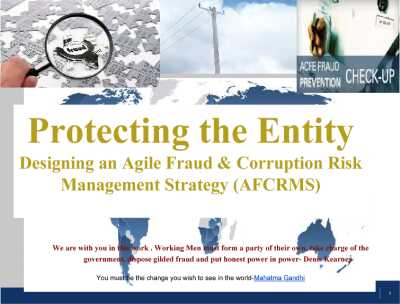 How do you know the invoice in your inbox is real?
How do you know the invoice in your inbox is real?
In 2025, accounts payable (AP) fraud is faster, smarter, and harder to detect than ever. All it takes is a fake vendor profile, a slightly altered invoice, or a duplicated bank detail, and your company could be out tens of thousands before anyone notices.
From deepfake documents to synthetic vendors, fraudsters are exploiting weak links in payment workflows. That’s why more finance teams are shifting from reactive audits to proactive, real-time fraud detection built into their AP process. Organizations handling high transaction volumes often partner with a fraud prevention company that specializes in layered detection across vendor onboarding, invoice validation, and payment authorization.
Today’s best tools combine AI, metadata forensics, and anomaly detection to catch document fraud before payment, not after the damage is done.
In this guide, you’ll learn what AP fraud looks like in 2025, how AI detects it, and which five tools are best for preventing it.
What AP Fraud Looks Like in 2025
Accounts payable fraud isn’t new, but in 2025, it’s more automated, scalable, and convincing than ever.
Instead of crude invoice scams or manual errors, today’s fraud often involves AI-generated documents, fake vendor setups, or payment redirection through subtly altered bank details. Fraudsters don’t need access to your systems; they just need a moment of trust in your process.
Common AP Fraud Tactics:
- Invoice Tampering: Real invoices are intercepted and edited, changing payment details or amounts before submission.
- Fake Vendors: Fraudsters create lookalike vendors or piggyback on inactive ones to submit false invoices.
- Duplicate Payments: The same invoice is submitted with small changes (like date or PO number) to trigger a second payment.
- Business Email Compromise (BEC): Finance teams are tricked into paying fake invoices through phishing or impersonation.
- Synthetic Vendor Networks: A network of fake entities is used to submit and approve each other’s fraudulent invoices.
These attacks don’t just target enterprise giants. SMBs are often hit harder, with fewer internal controls and manual processes that leave room for error.
That’s why modern AP teams are looking beyond basic approval chains and embracing fraud detection that works in real time, before money leaves the system.
Manual vs AI-Powered Fraud Detection in AP
Catching fraud in accounts payable used to mean slow, manual reviews: double-checking invoice fields, confirming vendor details by phone, or spotting red flags by gut feel. While those methods still matter, they’re no match for the volume and sophistication of today’s threats.
Why Manual Reviews Fall Short
- Volume Overload: Reviewing dozens or hundreds of invoices daily makes human error inevitable.
- Subtle Tampering: Small changes to file metadata or logos often go unnoticed.
- Lack of Consistency: Risk assessment varies by reviewer, and fatigue only makes it worse.
- Delayed Discovery: Fraud is often discovered after payment, during audits or reconciliations.
Manual checks can’t scale, and fraudsters know it.
How AI Detects What Humans Miss
Modern fraud detection tools use machine learning and document forensics to analyze every invoice in real time. Here’s what they bring to the table:
- Metadata Analysis: Flags documents edited in tools like Photoshop or submitted from suspicious sources.
- Field Validation: Cross-checks invoice data (e.g., amounts, POs, vendor names) for inconsistencies.
- Duplicate Detection: Catches identical or near-identical invoices, even with altered file names.
- Risk Scoring: Assigns a fraud probability score based on learned patterns across millions of invoices.
- Vendor Verification: Confirms bank details, tax IDs, or contact info against trusted databases.
This isn’t about replacing people, it’s about giving them superpowers.
Instead of scanning for issues line by line, AP teams can focus on exceptions flagged by a system that never gets tired, never skips steps, and learns over time.
Top Fraud Detection Tools for Accounts Payable in 2025
From invoice tampering to vendor fraud, today’s AP risks call for smarter tools, not just faster workflows. These five platforms help finance teams detect fraud before it reaches your general ledger.
Whether you’re looking for a full AP automation suite or a precision fraud detection layer, here are the best options in 2025.
1. Klippa DocHorizon
Klippa DocHorizon is more than an OCR tool; it’s a full intelligent document processing (IDP) engine with advanced document fraud detection built in.
For AP teams, it helps detect forged invoices, duplicate submissions, and tampered bank details at the moment of upload. Instead of relying on after-the-fact reviews, DocHorizon uses layered AI techniques to scan for anomalies in both document content and structure instantly.
Strengths:
- Real-time fraud scoring for invoices, receipts, and payment requests
- Metadata & EXIF analysis to catch file manipulation
- Photoshop and copy-move detection for tampered visuals
- Duplicate invoice detection to prevent overpayment
- Seamless API integration with ERP and accounting tools
- ISO 27001 certified and GDPR compliant
Klippa is built to integrate quietly into your existing AP workflows and protect every document that flows through them.
2. HighRadius
HighRadius AP Automation delivers enterprise-grade invoice processing by combining agentic AI, advanced workflow automation, and deep ERP integrations to streamline accounts payable operations. Its platform centralizes AP functions across locations, business units, and spend types – direct, indirect, PO, and non-PO, allowing finance teams to scale operations without increasing headcount
By integrating autonomous 3-way matching, vendor validation, and real-time anomaly detection, HighRadius helps AP teams prevent duplicate payments, tampered invoices, and vendor impersonation without disrupting existing workflows.
Strengths:
- AI-based anomaly detection for invoices and vendor records
- Automated 3-way matching with real-time fraud alerts
- Continuous vendor verification to prevent payment redirection
HighRadius fits best for enterprises that want end-to-end AP automation with a proactive, built-in fraud prevention system.
3. Moss
Moss is Europe’s most powerful and flexible spend management platform, delivering integrated end-to-end workflows from invoice management to payments. Moss automates invoice entry, pre-accounting, and invoice matching, using adaptable approvals, validation rules, and real-time monitoring to flag inaccuracies before payments are released.
For AP departments, Moss identifies VAT errors, duplicate invoices, IBAN changes, and other anomalies before they become costly issues. With AI-powered purchase controls and integrated budgets, Moss enforces policy compliance and prevents unauthorised spend across cards, reimbursements, and incoming invoices. Its unified dashboard provides finance teams with complete visibility into transactions, procurement, budgets, and anomalies the moment they occur.
Strengths:
- Real-time invoice verification for duplicates, VAT discrepancies, IBAN changes, and more
- Automated matching of invoices with suppliers, POs, and budgets
- Granular approval workflows that prevent unauthorised or out-of-policy payments
- Duplicate invoice and spend detection
- AI-powered invoice capture, line-item processing, and VAT rate extraction
- Full audit trail for every action and transaction
- Native integrations with leading accounting and ERP systems
Moss is designed to streamline AP operations with intelligent, adaptable workflows and transparent audit trails. The platform provides tighter control, more accurate accounting data, and stronger financial reporting, enabling true end-to-end AP automation.
4. AvidXchange
AvidXchange is an enterprise-grade AP automation platform that helps streamline payments, approvals, and vendor management. While its core focus is automation, it includes fraud control measures like payment verification workflows, approval routing, and audit trails.
Strengths:
- Automated invoice matching and approvals
- Vendor management tools to reduce risk
- Native payment controls with alerts for anomalies
- Integrates with NetSuite, Sage, QuickBooks, and more
AvidXchange is ideal for companies that want one platform to handle both fraud detection and day-to-day AP tasks at scale.
5. Stampli
Stampli makes invoice approvals more transparent and secure. It embeds fraud detection into the collaboration process so every invoice gets the right scrutiny at the right time.
By centralizing conversations, approvals, and documentation, Stampli reduces the risk of invoice tampering, impersonation, or misrouted payments.
Strengths:
- Granular user permissions and approval flows
- Audit-ready tracking of all invoice changes
- Flagging and routing of suspicious documents
- Native integration with ERP systems like SAP, Oracle, and Microsoft Dynamics
Stampli works well for companies that want tight internal controls without slowing down AP.
6. Eftsure
Eftsure focuses on one problem: making sure you only pay who you actually owe.
It verifies vendor bank details in real time, cross-checking against independent data sources and alerting teams to mismatches. It’s a powerful fraud prevention layer for any AP team that wants to stop payment redirection and business email compromise.
Strengths:
- Live bank account verification
- Real-time alerts for new or changed vendor info
- Integrates with most ERP and accounting systems
- Custom rules for payment approvals
Eftsure is especially valuable for organizations managing a high volume of external vendors.
7. SEON
SEON isn’t an AP tool by design, but its fraud scoring engine is useful for verifying digital identities, particularly for vendor onboarding or payment authorization.
It builds a risk profile based on email, phone, IP, and domain signals, helping you flag suspicious vendors before money ever leaves your account.
Strengths:
- Real-time fraud scoring based on digital footprint
- Flexible API integration
- Scales from small businesses to enterprises
- Works well alongside existing AP or ERP systems
SEON fits best as a fraud layer on top of your AP system, especially if vendor risk is a concern.
Choosing the Right AP Fraud Detection Tool
The best fraud detection software isn’t just about features, it’s about fit. Your choice depends on how your AP team works, what risks you face, and how much control you need over payments.
Here’s how to evaluate your options across six essential criteria:
Integration:
Look for software that connects easily to your ERP or accounting tools. Robust APIs and native integrations make fraud detection seamless.
Scalability:
Choose a platform that can grow with your invoice volume and team size: from small business to enterprise.
AI Capabilities:
AI should do more than OCR. It should flag subtle tampering, duplicates, and anomalies that manual reviews miss.
Invoice-Specific Features:
The best tools validate metadata, detect duplicates, and analyze invoices for signs of manipulation.
Security & Compliance:
Make sure the platform is certified (e.g. ISO 27001, GDPR) and designed to handle sensitive financial data securely.
Support & Explainability:
When a document is flagged, you need to know why and have support on hand to resolve it quickly.
Each of these categories helps clarify what you really need: full AP automation with built-in safeguards, or a fraud-focused layer that plugs into your stack.
Final Thoughts: How to Stay Ahead of AP Fraud in 2025
Accounts payable fraud isn’t always dramatic. Sometimes it’s a subtle change in a bank account number. A vendor that looks legitimate. An invoice that gets paid twice.
In 2025, the tools fraudsters use are faster and more convincing, but so are the tools designed to stop them.
Whether you choose an all-in-one AP platform like AvidXchange or Stampli, or a specialist tool like Eftsure or SEON, the goal is the same: detect risk before payment leaves your system.
For many teams, the ideal solution combines both: intelligent automation for invoice processing and real-time fraud detection that works quietly in the background.
That’s where platforms like Klippa DocHorizon come in, offering layered protection at the document level, right where most fraud starts.
The future of AP fraud prevention isn’t more paperwork or longer review cycles. It’s smarter systems, integrated checks, and a focus on prevention instead of damage control.
If you’re building a safer AP process this year, the right software isn’t just helpful; it’s essential!
 How do you know the invoice in your inbox is real?
How do you know the invoice in your inbox is real?



